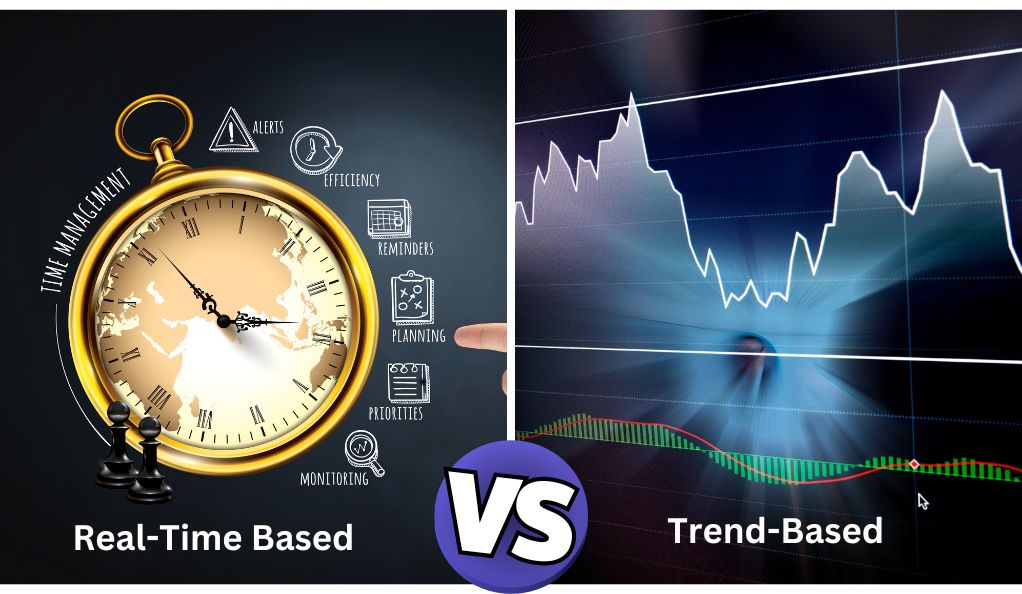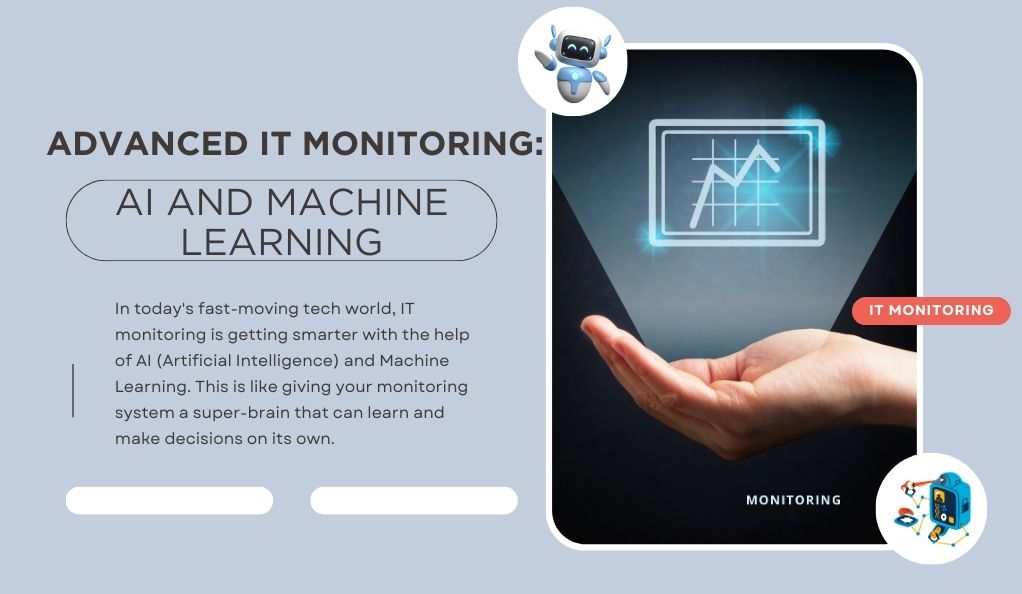IT Monitoring in Cloud Computing Environments
Welcome to our comprehensive guide on IT monitoring in cloud computing. Dive into essential strategies and best practices to ensure optimal performance, security, and compliance in your digital infrastructure.
The Evolution of IT Monitoring in Cloud Computing
In the past, IT monitoring was simpler. Companies had their computers and servers in one place. But now, with cloud computing, it’s different. Cloud computing means using tech services over the internet. It’s like storing photos online instead of on your phone.
With cloud computing, IT monitoring had to change. Now, it needs to watch over tech that’s not just in one place but spread across the internet. This is a big job. It’s like having to watch over many houses in different places at the same time. Cloud computing has made IT monitoring more complex, but also more important. It ensures that even though the tech is far away, it’s still working well. This way, businesses can use the latest tech without worrying about problems or downtime.
Understanding IT Monitoring and Its Importance
IT monitoring is like a health check for technology. It’s a way to keep an eye on all the tech parts in a company. This includes computers, networks, and software. Think of it as a watchdog. It’s always watching to make sure everything is working right. If something goes wrong, IT monitoring spots it quickly. This helps fix problems before they get big.
Why is IT monitoring important? Because when tech fails, it can cause big issues. For example, if a website goes down, customers can’t buy things or get information. This can lead to lost sales and unhappy customers. IT monitoring helps avoid these problems. It makes sure that the tech is always ready to go, just like a car that’s well-maintained.
Key Components of IT Monitoring
When we talk about IT monitoring, there are two main parts we need to focus on. These are like the two hands of IT monitoring: one is for hardware, which includes all the physical tech stuff, and the other is for software, which is all about the programs and apps.
Infrastructure Monitoring: Ensuring Hardware Health
Infrastructure monitoring is all about keeping an eye on the physical tech stuff. This includes:
- Computers and Servers: These are like the brains of a company’s tech setup. Monitoring them means checking that they are working smoothly and not overheating or slowing down.
- Network Devices: This includes things like routers and switches that help computers talk to each other. Monitoring ensures they are passing information correctly and quickly.
- Storage Systems: These are like big digital cupboards where data is kept. Monitoring checks that there’s enough space and that data can be retrieved without any problems.
Software Monitoring: Tracking Application Performance
Software monitoring, on the other hand, is all about the programs and apps that run on the hardware. It includes:
- Application Performance: This is like checking how well a car is running. It’s about making sure the software is fast, efficient, and not crashing.
- User Experience: This part is about how people find using the software. Are they happy with it? Is it easy to use? Monitoring can answer these questions.
- Security: This is like a digital guard. It watches for any signs of trouble, like viruses or hackers, trying to break into the system.
How IT Monitoring Works
Understanding how IT monitoring works is a bit like learning how a weather station tracks the weather. It involves collecting lots of information, analyzing it, and then using that knowledge to make smart decisions.
The Process: Foundation, Software, and Interpretation
Foundation: This is the first step. It’s like laying the groundwork. Here, the focus is on the basic tech stuff like computers, servers, and networks. Think of it as gathering all the ingredients before you start cooking.
Software: The second step is where these ingredients get mixed and cooked. This part deals with the software that’s being used to check on the tech stuff. It collects data like how much memory is being used, or how fast a program is running.
Interpretation: The final step is like tasting the food to see if it’s good. Here, all the data collected is studied and understood. This helps in making decisions, like whether a computer needs an upgrade, or if a network is too slow.
Tools and Techniques: From Agents to Analytics
- Agents: These are small programs installed on devices to collect data. Think of them as secret agents gathering intel.
- Analytical Tools: These tools take all the data from the agents and make sense of it. It’s like solving a puzzle to see the bigger picture.
- Dashboards: These are screens where you can see all the information in an easy way. It’s like a scoreboard showing you the status of everything at a glance.
- Alerts: These are notifications that let you know when something’s not right. It’s like an alarm clock that wakes you up when needed.
Types of IT Monitoring in Cloud Environments
In the world of cloud computing, IT monitoring takes on different forms. It’s like having different types of doctors, each specializing in a certain area of health. Each type of monitoring focuses on a specific aspect of the cloud to ensure everything is working as it should.
Server and System Monitoring: Keeping a Check on Vital Components
Server and System Monitoring is like the general physician of IT monitoring. It keeps an eye on the main components of cloud environments. This includes:

- Server Health: Checking if the servers are healthy, like monitoring a person’s heartbeat.
- Performance Metrics: Looking at how fast and efficient the servers are, similar to checking how fast someone can run.
- Resource Usage: Keeping track of resources like memory and storage, much like watching a car’s fuel level.
Cloud-Specific Monitoring: Understanding Unique Challenges
Cloud environments have their own special needs. Cloud-Specific Monitoring is like a specialist doctor who knows about rare diseases. It focuses on:
- Virtual Network Monitoring: This is like monitoring traffic flow on roads, ensuring data travels smoothly and securely in the cloud.
- Storage and Database Monitoring: This is about keeping an eye on cloud storage spaces, ensuring they are safe and have enough room, like checking that a warehouse is big enough and secure.
- Application Monitoring in the Cloud: This involves watching over the software that runs in the cloud, ensuring it performs well and provides a good user experience.
Strategies for Effective IT Monitoring
Having the right strategies for IT monitoring is like having a good game plan in a sport. It helps you win by making sure everything runs smoothly and efficiently. Let’s look at some key strategies that can make IT monitoring more effective, especially in complex environments like cloud computing.
Real-Time vs. Trend-Based Monitoring: Finding the Right Balance
- Real-Time Monitoring: This is like having a live scoreboard. It gives you instant information about what’s happening at that very moment. It’s great for quickly spotting and fixing problems.
- Trend-Based Monitoring: This is more like looking at game statistics after it’s over. It helps you see patterns and trends over time. This can be useful for planning and making improvements for the future.

Both real-time and trend-based monitoring have their place. It’s important to find the right balance between them. It’s like knowing when to watch the game live and when to analyze the play afterward.
Proactive vs. Reactive Approaches in IT Systems

- Proactive Monitoring: This is like training and preparing before the game. You try to prevent problems before they happen. For example, you might upgrade systems before they become outdated.
- Reactive Monitoring: This is more like responding to an injury during the game. You deal with problems as they come up. An example would be fixing a server when it crashes.
A good IT monitoring strategy uses both proactive and reactive approaches. It’s about being ready before problems happen and also being able to handle them quickly if they do occur.
The Role of IT Monitoring in Security and Compliance
In the digital world, IT monitoring is not just about making sure systems work well; it’s also about keeping them safe and following rules. Think of it as having a security guard who also makes sure everyone follows the house rules.
Security Monitoring: A Shield Against Cyber Threats
Security Monitoring is like having a watchful eye that never sleeps. It constantly looks for signs of trouble, such as cyber-attacks or data breaches. Here’s what it includes:
- Virus and Malware Detection: This is like looking for bugs that can make the system sick.
- Intrusion Detection: It’s like watching for uninvited guests trying to sneak into your digital house.
- Data Breach Prevention: This is about protecting your precious data, like keeping your money safe in a bank.
Security monitoring is essential because it not only helps to catch and stop cyber threats but also helps in quickly responding if something bad happens.
Ensuring Regulatory Compliance through Continuous Monitoring
Compliance Monitoring is about making sure the company follows all digital laws and regulations. It’s like having a rulebook for playing a game fairly. This includes:
- Data Privacy Laws: Making sure personal information is kept safe and private.
- Industry-Specific Regulations: Following special rules for different types of businesses, like a hospital or a bank.
- Audit Trails: Keeping records of who did what and when in the systems, like a diary of digital actions.
Advanced IT Monitoring: AI and Machine Learning

In today’s fast-moving tech world, IT monitoring is getting smarter with the help of AI (Artificial Intelligence) and Machine Learning. This is like giving your monitoring system a super-brain that can learn and make decisions on its own.
Leveraging AI for Enhanced Monitoring Capabilities
AI in IT monitoring is like having a super-smart assistant that can do many things:
- Automatic Problem Solving: AI can quickly figure out what’s wrong and how to fix it. It’s like having a detective who’s really good at solving mysteries.
- Predictive Maintenance: It can predict problems before they happen. Imagine having a weather forecast, but for your IT systems.
- Smart Alerts: AI can send alerts that are more accurate and helpful. It’s like getting a message that not only tells you there’s a problem but also suggests how to fix it.
Using AI in IT monitoring helps make everything more efficient and reduces the chances of big problems happening.
Predictive Analysis: The Future of IT Monitoring
Machine Learning, a part of AI, is all about learning from the past to make better decisions in the future. In IT monitoring, it can do things like:
- Spotting Trends: It can look at all the data over time and see patterns. This is like noticing that every time you eat too much candy, you feel sick.
- Improving Over Time: The more data it has, the smarter it gets. It’s like learning from every game you play to become a better player.
- Customized Solutions: It can tailor monitoring to fit the specific needs of a business. This is like having a suit that’s made just for you.
Best Practices for IT Monitoring in Cloud Computing
When it comes to IT monitoring in cloud computing, it’s like caring for a special type of garden. You need the right tools and techniques to make sure everything grows well and stays healthy. Here are some best practices to help you do just that.
Setting Effective Thresholds and Alerts
Setting thresholds and alerts in IT monitoring is like setting alarms to remind you of important tasks. It’s about finding the right balance so you get notified about real issues without being overwhelmed by too many alerts. Here’s how to do it:
- Set Realistic Thresholds: This means deciding the points at which you need to be alerted. It’s like setting an alarm for when your phone battery gets too low.
- Prioritize Alerts: Not all alerts are equally important. It’s like knowing the difference between a reminder for a meeting and an alarm for a fire.
- Regularly Review and Adjust: As your cloud environment changes, so should your thresholds and alerts. It’s like adjusting your alarm times as your daily schedule changes.
Integrating IT Monitoring with Business Goals
IT monitoring should not just be about technology; it should also align with what the business wants to achieve. Here’s how to integrate the two:
- Understand Business Objectives: Know what’s important for the business, like attracting more customers or improving product quality.
- Align Monitoring Goals with Business Goals: Make sure your monitoring efforts help achieve these objectives. It’s like making sure your daily tasks help you reach your long-term goals.
- Communicate Effectively with Business Teams: Regularly talk to other teams in the business to understand their needs and explain how IT monitoring can help.
Conclusion
As we come to the end of our journey through the world of IT monitoring, remember it’s like being the captain of a ship. You need to be aware of everything happening on your ship (your IT systems) and navigate it safely through the seas (the business world).
IT monitoring is essential for any business, especially in cloud computing. It’s like having a trusty compass that guides you and keeps you on the right path. By understanding its importance, implementing the best practices, and using advanced tools like AI and Machine Learning, you can ensure your IT systems are not only functioning but also contributing to the success of your business.
In the end, effective IT monitoring is about being prepared, staying alert, and continuously improving. It’s your key to a smooth-sailing business journey, ensuring that you’re ready to face any challenges that come your way. Keep monitoring, keep improving, and watch your business thrive in the digital ocean!


Leave a Reply